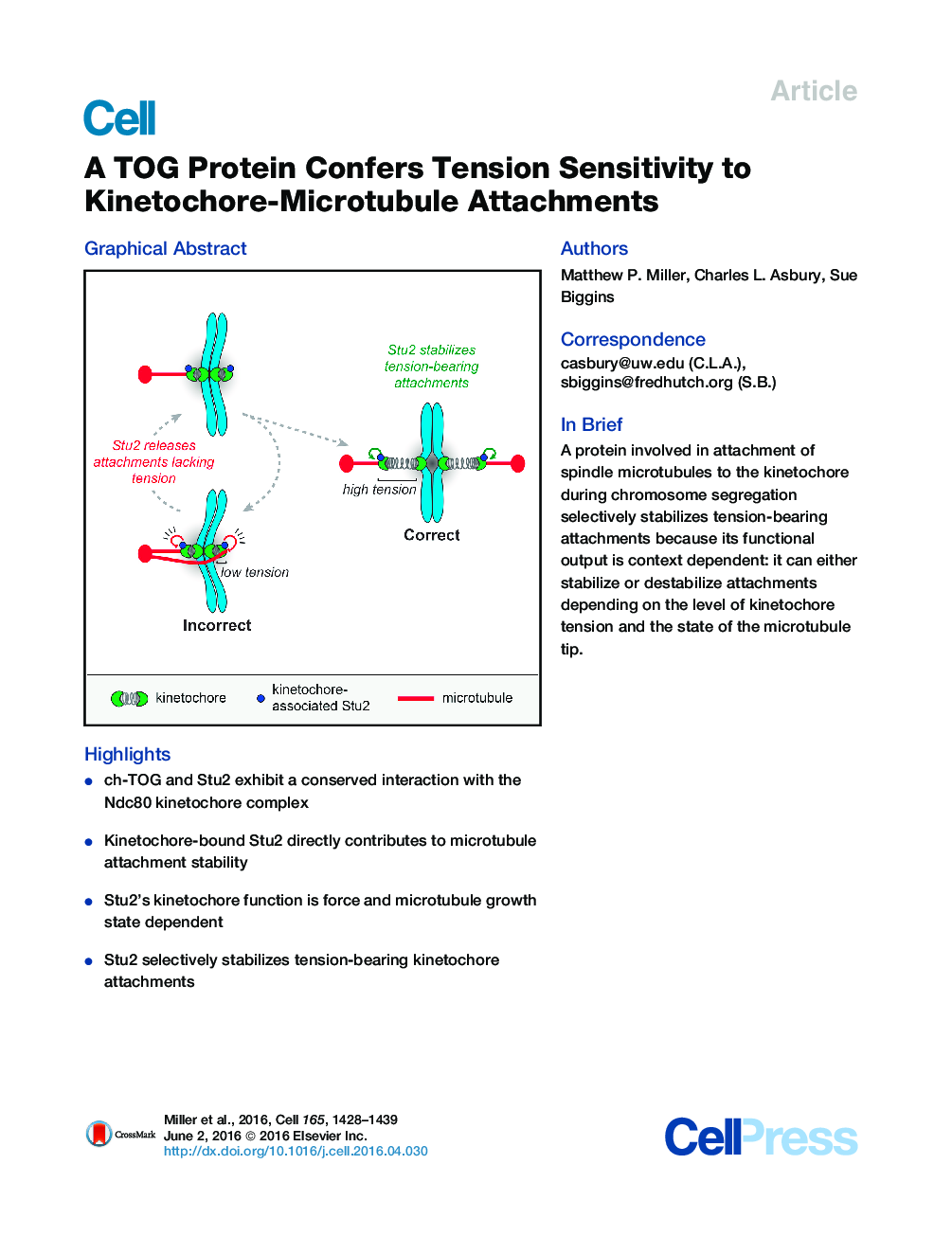| کد مقاله | کد نشریه | سال انتشار | مقاله انگلیسی | نسخه تمام متن |
|---|---|---|---|---|
| 2035033 | 1072125 | 2016 | 12 صفحه PDF | دانلود رایگان |

• ch-TOG and Stu2 exhibit a conserved interaction with the Ndc80 kinetochore complex
• Kinetochore-bound Stu2 directly contributes to microtubule attachment stability
• Stu2’s kinetochore function is force and microtubule growth state dependent
• Stu2 selectively stabilizes tension-bearing kinetochore attachments
SummaryThe development and survival of all organisms depends on equal partitioning of their genomes during cell division. Accurate chromosome segregation requires selective stabilization of kinetochore-microtubule attachments that come under tension due to opposing pulling forces exerted on sister kinetochores by dynamic microtubule tips. Here, we show that the XMAP215 family member, Stu2, makes a major contribution to kinetochore-microtubule coupling. Stu2 and its human ortholog, ch-TOG, exhibit a conserved interaction with the Ndc80 kinetochore complex that strengthens its attachment to microtubule tips. Strikingly, Stu2 can either stabilize or destabilize kinetochore attachments, depending on the level of kinetochore tension and whether the microtubule tip is assembling or disassembling. These dichotomous effects of Stu2 are independent of its previously studied regulation of microtubule dynamics. Altogether, our results demonstrate how a kinetochore-associated factor can confer opposing, tension-dependent effects to selectively stabilize tension-bearing attachments, providing mechanistic insight into the basis for accuracy during chromosome segregation.
Graphical AbstractFigure optionsDownload high-quality image (162 K)Download as PowerPoint slide
Journal: - Volume 165, Issue 6, 2 June 2016, Pages 1428–1439